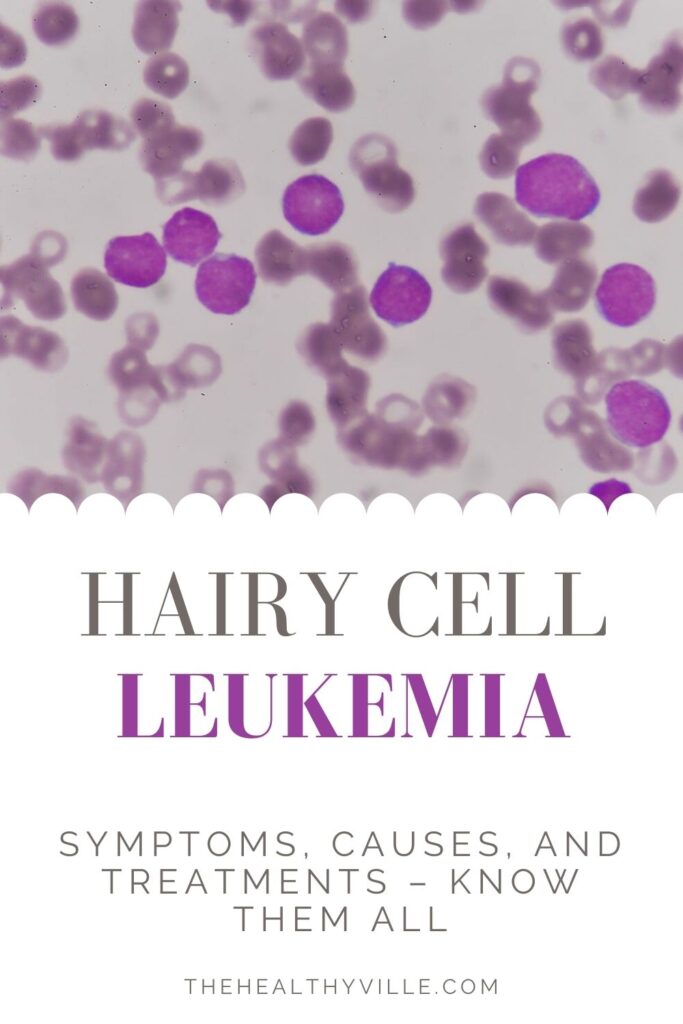Hairy cell leukemia symptoms that stand out the most are Chronic fatigue and excessive bruising. Learn more about this cancerous disease before it’s too late!
Hairy cell leukemia or hairy cell leukemia is a cancer in which the patient’s bone marrow produces too many B lymphocytes, a type of white blood cell typical of the adaptive immune response. The abnormal lymphocytes appear “hairy” under the microscope, hence the name of the pathology.
As the number of abnormal B lymphocytes increases in the blood, the proportion of healthy white blood cells, red blood cells and platelets decreases, with all the physiological effects that this entails. If you want to know the causes, symptoms and treatment of this disease, keep reading.
Who is at risk?
As indicated in an article published in Cancer Therapy Advisor, hairy cell leukemia (or HCL, for its English translation Hairy Cell Leukemia) represents 2% of total leukemias, with an annual incidence of 1 case per 500,000 population. Men are much more prone to it; in particular 5 times more.
On the other hand, the average age of its appearance is 55 years. Thus, the typical patient is a middle-aged / elderly man with clinical signs such as fatigue, tiredness, and weight loss. According to the Mayo Clinic, there are 2 predisposing factors beyond gender and old age. These are as follows:
- Exposure to radiation: People who work in radioactive environments or have undergone radiation therapy to kill cancer may be more likely to develop hairy cell leukemia. Even so, there is still no conclusive evidence of this.
- Exposure to chemicals: Long-term exposure to agrochemicals and industrial compounds could promote this pathology, although it has not yet been confirmed.
Hairy cell leukemia symptoms
As we have said, hairy cell leukemia is a type of cancer that affects the blood and bone marrow. This usually progresses slowly or, failing that, does not get worse at all. As indicated by the National Library of Medicine of the United States, some of the most common clinical hairy cell leukemia symptoms are the following:
- Tendency to bruise or bleed. This is usually a sign of low blood platelets.
- Profuse sweating, especially at night.
- A feeling of abdominal fullness (enlarged spleen) that can make it a bit uncomfortable to eat at certain times or in large quantities. This can lead to unintended weight loss.
- Recurrent infections and fevers, due to a weakened immune system.
- Fatigue and tiredness.
- Lymphadenopathy, or what is the same, swollen lymph nodes.
As you can see, many of these clinical signs are typical of other pathologies. Therefore, this disease is usually diagnosed accidentally in a routine blood test.
Severe symptoms
Hairy cell leukemia progresses slowly and sometimes remains stable for several years without the need for medical treatment. The survival rate 5 years after diagnosis is 90%.
However, untreated hairy cell leukemia can crowd out healthy white blood cells in the bone marrow and circulating red blood cells, leading to severe infections, anemia, and bleeding. They are secondary diseases to cancer that can become dangerous.
How is do doctors diagnose it?
According to the journal Leukemia & Lymphoma, there are different diagnostic methods that can help medical professionals diagnose hairy cell leukemia. These are as follows:
- Physical exam and health history: Swollen spleen, enlarged lymph nodes, or abnormal bruising can be seen on direct physical exam. Of course, this is not a confirmation of the disease in any case.
- Complete blood count (CBR): used to detect the number of red blood cells in the blood, which may decrease as the disease progresses.
- Peripheral blood smear: A small sample of the patient’s blood is analyzed under a microscope. Here you can see the hair lymphocytes already described.
- Biochemical studies of the blood, bone marrow aspiration and biopsy, genetic tests, computerized tomography (CT) and other specific diagnostic tests.
Treatments
It is not always necessary to begin treatment for hairy cell leukemia once it has been diagnosed. According to the National Cancer Institute, in non-symptomatic cases the patient is carefully monitored to see if he develops clinical signs, although this can take a long time.
Once the condition described above develops, you can resort to chemotherapy (drugs that stop the formation of cancer cells), immunotherapy (the patient’s own immune system is used to destroy the cancer) or surgery, such as removal of the spleen if necessary.
Targeted therapy is a very promising field against this disease.
In any case, with the administration of certain drugs (2-chlorodeoxyadenosine 2-CdA, pentostatin or interferon-α), the 5-year survival rate of patients with advanced hairy cell leukemia is more than 85%. This means that, even in the most severe cases, death is not often thought of as safe.
Development of the disease
A publication of the Leukemia and Lymphoma Society shows us the development of the disease. It can be summarized in the following points:
The cells that give rise to normal lymphocytes undergo an acquired mutation in their DNA, which promotes the formation of hairy lymphocytes instead of normal ones.
Hair lymphocytes do not have immune capacity and accumulate in the bone marrow, liver and spleen, hence the latter sometimes has to be removed.
Hairy lymphocytes multiply uncontrollably, displacing the rest of the leukocytes, erythrocytes, and platelets.
This results in a lack of red blood cells (anemia), a deficiency of white blood cells (neutropenia), and a lack of platelets in the blood (thrombocytopenia).
What is there to remember about this disease?
Hairy cell leukemia is a very atypical type of cancer. It does not have to require immediate treatment and does not present an obvious risk of metastasis. Many patients can live for several years without treatment. Once they address it clinically, their lives can be dramatically lengthened.
No cancer is the end of the road until metastasis arrives, but in this case, even less. There are many treatments available, and medical research portends an increasingly promising future for patients.
Don’t forget to SHARE everything about hairy cell leukemia symptoms, causes and treatments with your friends and family on your social networks!

